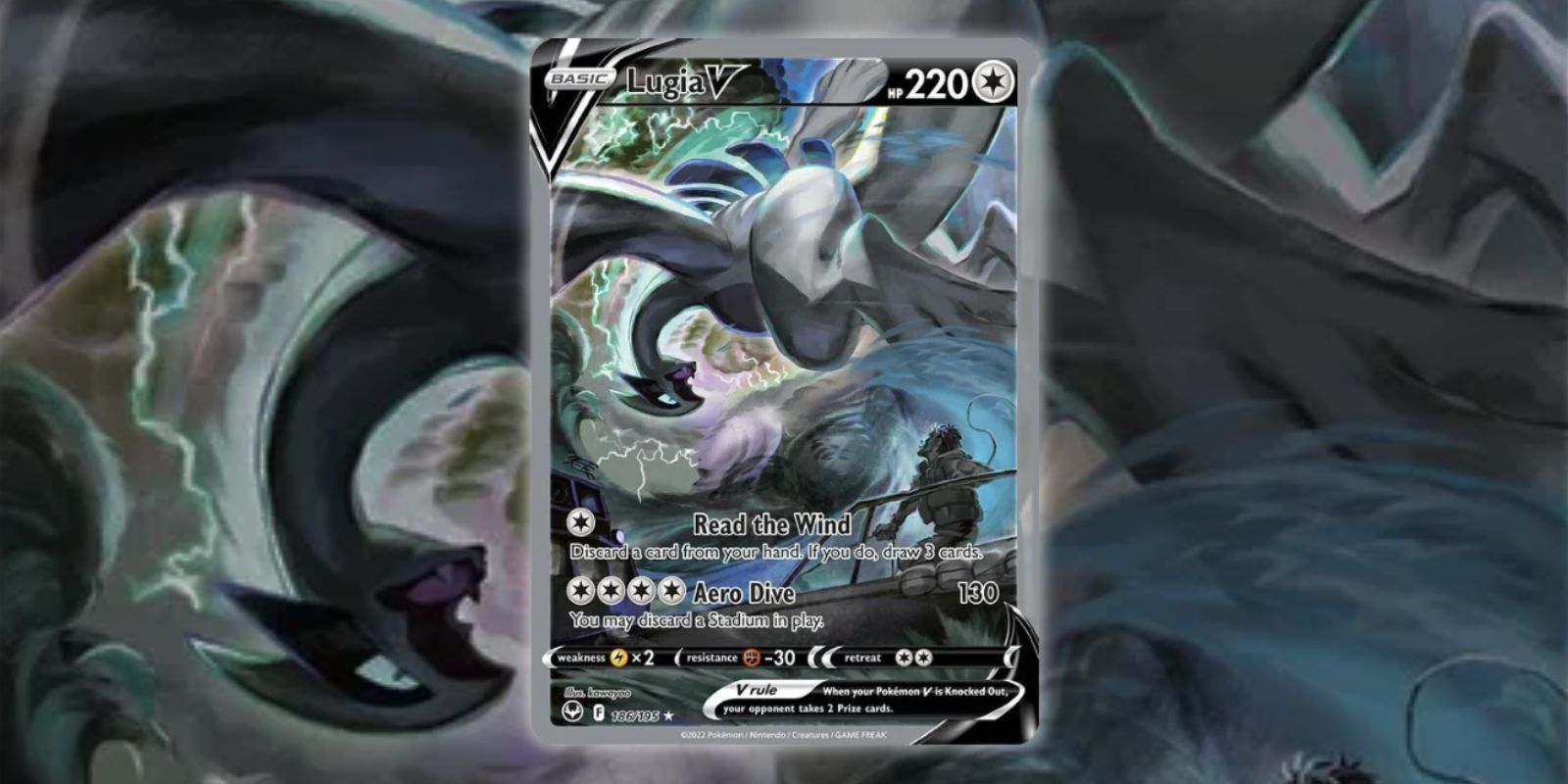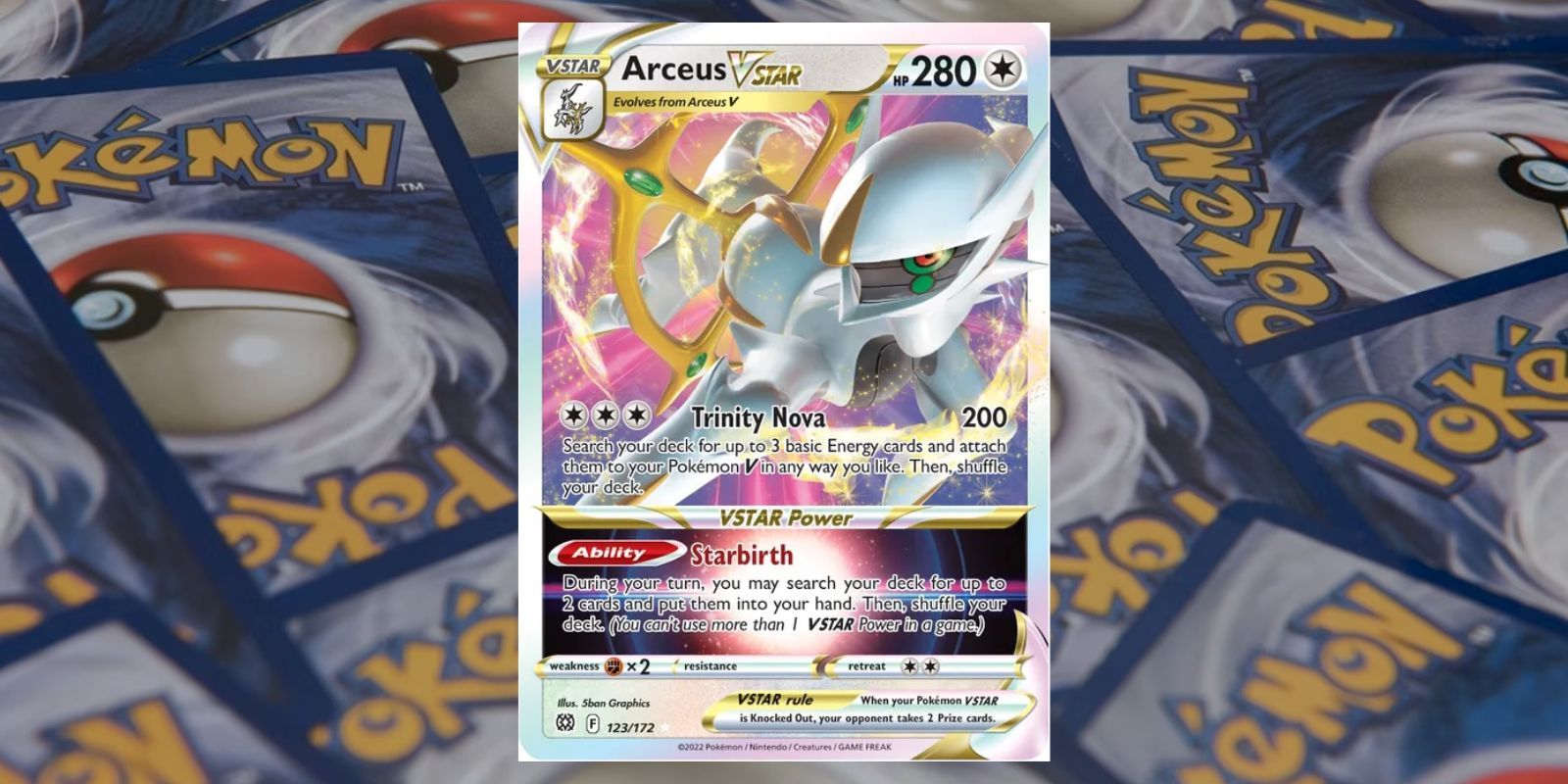Cards in the Pokémon Trading Card Game have gone through numerous changes over the years, introducing (and reintroducing) formats ranging from Pokémon EX to Pokémon V, and more besides. Much like the Scarlet and Violet series’ ongoing development of new Pokémon ex cards, several variations of Pokémon V exist, all with their own quirks and rules. While many Pokémon V are no longer legal in official tournaments due to rotation, it is still well worth understanding the mechanics behind these cards and how their incredible power can affect a game.
Pokémon V cards were introduced to the Pokémon TCG as part of the Sword and Shield series of expansion sets. There are three major Pokémon V variants in total when counting the original, which was later joined by VMAX and VSTAR cards. A small number of V-UNION Pokémon cards also exist, although these exist solely as promotional cards. Due to a combination of their strength and relative rarity, it should also be noted that many Pokémon V actually number among the most valuable Sword and Shield era cards.
Pokémon V Cards & Rules
Introduced in the Sword and Shield set, Pokémon V are similar to other variants like Pokémon ex, in that they follow a group of rules that break the normal Pokémon TCG conventions. All Pokémon V are considered Basic Pokémon, even if the Pokémon V is technically a 2nd or 3rd evolution. For example, Charizard V doesn’t need a Charmander and Charmeleon to be played first. Additionally, as is common with more powerful variant Pokémon cards, knocking out a Pokémon V allows a player to collect two Prize cards as opposed to the usual one.
Pokémon V cards possess much higher HP than an average Pokémon card and usually have powerful attacks and abilities to match. The two-prize knockout reward, also known as the V rule, acts as a counterbalance to this power, compensating opponents for the additional effort that goes into defeating one of these cards. Also like Pokémon ex or other variant cards in the TCG, Pokémon V cards have a different appearance than standard Pokémon cards. In addition to having a holofoil element, they resemble full art cards, with the depicted Pokémon or other effects even overlapping with the card’s outer border.
VMAX Pokémon Cards & Rules
Unlike Pokémon V, Pokémon VMAX cards (also introduced in Sword and Shield) do work as an evolution. More specifically, Pokémon VMAX evolve from Pokémon V. For example, in order to play a Toxtricity VMAX, a player must first place a Toxtricity V card on their bench or as their active Pokémon, and then evolve that Toxtricity V into a Toxtricity VMAX. These cards represent the Dynamax phenomenon unique to the Galar region, and even include a bar below the card name indicating whether the Pokémon in question is a regular Dynamax, Gigantamax, or Eternamax (unique to VMAX Eternatus) form.
Following on from Pokémon V cards, Pokémon VMAX get another boost in HP and can deal truly devastating damage to an opponent. However, playing these cards can be a risky move. When knocked out, a player’s opponent will take 3 Prize cards (the VMAX rule), which can be devastating and offer the opponent a solid lead, if not instantly winning the match. It should also be noted that mechanically, VMAX and other Pokémon V derivatives also count as Pokémon V in terms of other effects.
While VMAX cards are usually rarer and worth more than Pokémon V cards, both are important assets for playing the Pokémon TCG competitively. However, collectors may be more interested in VMAX, since these cards are harder to obtain and thus more valuable. Of course, Ultra Rare versions of Pokémon V variants also exist in most Sword and Shield TCG expansions and are naturally worth even more, although recent price fluctuations have led some to consider selling their Pokémon V.
VSTAR Pokémon Cards & Rules
In many ways, VSTAR are an alternative to VMAX. Like the previous card format, they evolve from Pokémon V of the same species. Unlike VMAX, however, knocking out a VSTAR Pokémon only rewards 2 Prize cards (as per the VSTAR rule). VSTAR cards also all feature a VSTAR Power, giving each Pokémon a particularly potent Ability to use. However, only one VSTAR Power can be used by a player during the course of a match, making the choice and use of such an Ability highly tactical.
VSTAR cards also share distinctive gold and silver aspects alongside a pearlescent border, while their artwork shows a Pokémon surrounded by golden energy. These design elements reflect the core concept of VSTAR Pokémon, that they have gained power from Arceus itself. As such, the expansion set in which they were introduced, Brilliant Stars, is based around Arceus VSTAR.
The promotional V-UNION cards are played as a set of four, which form one extra-large card when put together. Unusually, in addition to a knockout rewarding three Prize cards, they must be played to the Bench from the Discard Pile, and each V-UNION can only be played once per game.
To obtain any variant of Pokémon V cards, people will want to purchase packs or sets from the Pokémon Sword and Shield TCG collection. The cards can be found inside boosters, as part of pre-built decks, or as promo cards in special box sets for the Pokémon Trading Card Game. The various types of Pokémon V offer many possibilities in gameplay, and playing even one can turn the tide of battle in an instant.





